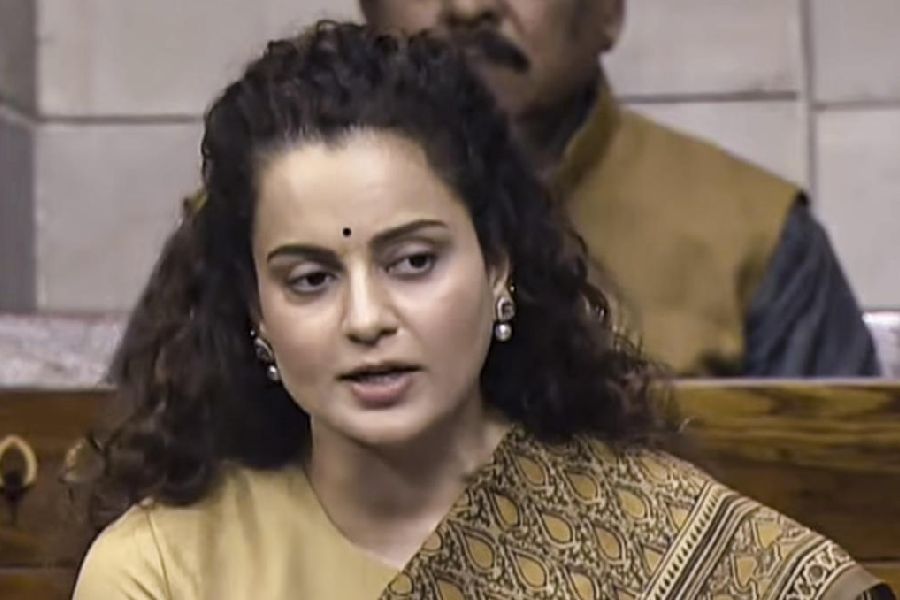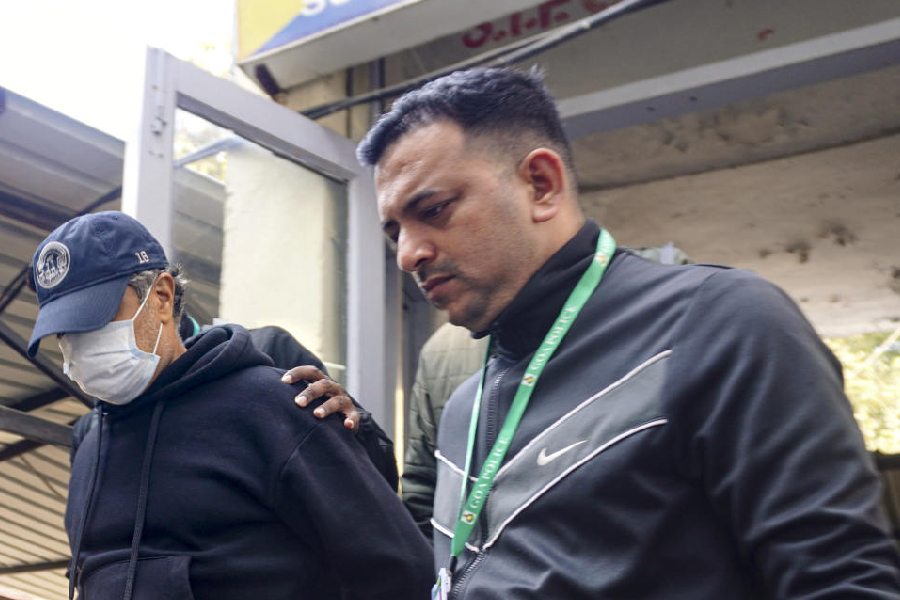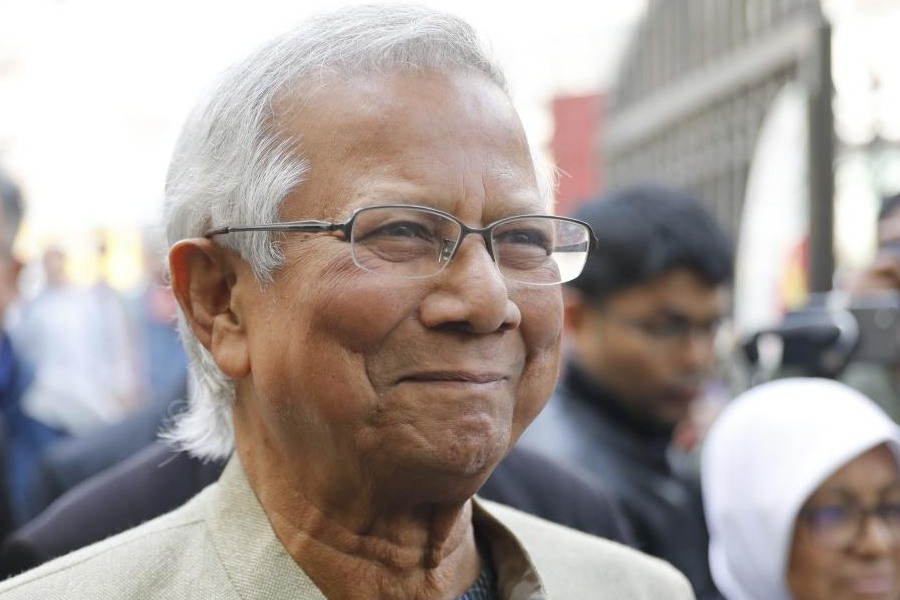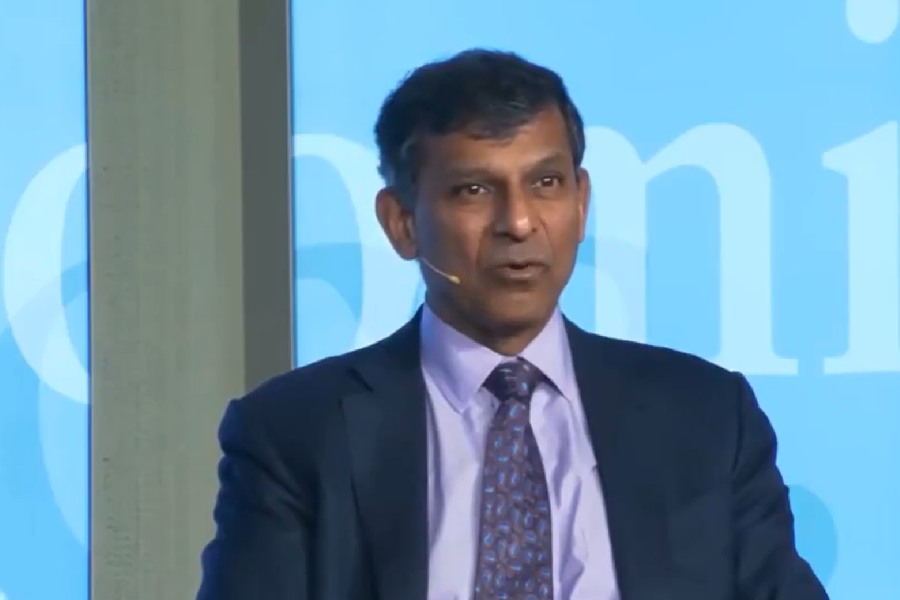Some interactions are a once-in-a-lifetime opportunity. So was the one that we did last month with the mother-daughter duo of Suman Ghosh’s film Puratawn — Sharmila Tagore and Rituparna Sengupta. As the film releases today in theatres, we recall our recent afternoon rendezvous at Tagore’s Vasant Vihar home in Delhi, where the duo decked up in outfits from their own wardrobes. Rituparna in a pretty pink sari complemented Sharmila Tagore’s sari in a soft lilac hue.
It’s a full-on feast for the eyes as one steps inside the white building with a modern exterior. The interiors have an aesthetic of its own, beautifully done up with paintings and antiques. A painting from MF Husain’s horse series on one wall, a beautifully arranged fireplace at the other end of the room, and a corner dedicated to family pictures. It instantly reminded me of the character Tagore plays in Puratawn. Mrs Sen, an 80-year-old obsessed with her collected objects of the past. Talking about her involvement in the art and aesthetics of her home and whether she too relates it to her character in Puratawn in this respect, Tagore says: “I think so. Because both from my husband’s side and my Bengali side it is an old family. So in both families, our homes are filled with old things. So everything in my house is old. It reflects a certain flavour I guess. It is not modern. It has some modern things but nothing is ultra modern. Sometimes, I feel like having an ultra modern house because this is a lot of clutter. But then I realise that perhaps I like clutter.” (Smiles)
Talking about the film, Rituparna adds: “Yes, we are talking of the past but at the same time I feel this movie is about the journey of the new generation as well. It is about connecting with the past. While we remember the past, we must also move forward. That is what the film is about.”
Sharing her reaction after watching the MAMI screening of Puratawn, Tagore says: “I just loved it! I saw it on my laptop before that. But I loved watching it on the big screen for the first time. With the music and everything… the totality of the film made a difference on the big screen. I liked myself. Normally, I don’t like myself. I am very critical of myself. I keep finding out faults and saying I could have done better. But in Puratawn, I felt I did okay, especially the first scene and the scene with the doctor. I think I have done a good job and convincing job. But now it is for the audience to say. I recently watched the screening of Nayak, too, which I watched 60 years ago on the big screen. And I loved myself there as well.”
At MAMI, a full house reacted to the screening with a standing ovation. Talking about looking forward to the audience reaction, the veteran actor says: “In a theatre when lots of people go and see the film then that collective experience is what comes out. It is difficult to understand the film’s success from the public reaction at a select screening. The actual test will be on the 11th (April) when a lot of people will watch it. I hope people will like it because it is one of my favourite films. I have seen Anupama and Aradhana with the audience. When the first shot of mine in grey hair appears in Aradhana, the entire audience starts laughing but after that one-minute scene with Madan Puri is over, the audience starts sniffling. So within that space of one minute they believed in the character of that film. This is not just Sharmila in a grey look but she looks like an old person. That was a learning experience. The audience reacts very spontaneously and nobody can gauge how they will react. Let’s hope they like this film.”
An evergreen style icon, especially of the 60s and 70s — Bollywood’s retro era — Tagore is known for her bold fashion statements. Talking about being a style icon over the years through her films, photoshoots and public appearances, she says: “I used to wear tie-back blouses and hipsters and bikinis when nobody else did. In fact, it was in 1966, and for so many years nobody did. I used to do the winged liner. So, I guess I have always been considered as a style icon because I always did things that nobody else did at that time. However, my favourite decade in styling would be now. I feel my styles of the past — the bouffant or the side locks — always interfered with the character. But in those days, I think the audience was very forgiving. We got away with it. But before our lot came in, Waheedaji (Rehman) and Nutan were all so simple. Even if you play those films now, it looks contemporary. But we looked weird with those bouffants! But that was the time and people liked it.”
Recalling her growing-up days watching Sharmila Tagore on screen, Rituparna says: “Whenever we did a dance number, we would try to wear the ghagra-choli in her style, it was very famous. I think she has a fantastic choice of saris too. Whenever we think of styling up in retro looks, we follow her looks — the high bouffant and the elaborate eye make-up. Very interestingly, she used to always use light lipsticks. But what I want to imbibe in me is her grace and elegance and how she carries it with so much elan and confidence.”
But whose style did the style icon herself follow? “I liked Aunty Ayesha (Maharani Gayatri Devi). She always looked so elegant. She would be without any make-up and in the same hairstyle throughout, and she would wear chiffon saris. She was my style icon. Now, style to me is all about comfort and colours. Not necessarily the price. Since I am short, I don’t like wearing heavy saris like Kanjivarams. I think underdressing is better than overdressing because the personality comes through.”
While discussing style with Tagore, how can we not ask her about her signature blouses! “Yes, the Sharmila Tagore blouses are very famous. There’s a story behind it. When I was getting my Padma Bhushan, somebody was sitting next to me also receiving the award and she remarked that the blouses I wear don’t suit me. It falls off my shoulder. It was a random remark but then I decided to change it. I understood that this worked better,” says the actress.
Recalling Tagore’s involvement in her looks in Puratawn, Rituparna shares: “She was quite involved with her costumes. In the film she has a personality which is very strong and she looks quite elegant. The time frame was very important in the choice of the colour palette of her clothes. She wears normal cotton saris. She was very picky about the blouse. She preferred a certain design of the blouse and petticoat. I was amazed to see her involvement in the process as a very senior actor. I think every movie of hers has told a style story. She was a style rebel of her time but did it all very effortlessly.”
Talking about her own look in Puratawn, Rituparna says: “My look was about minimal make-up as Suman wanted. All my directors want me in minimal make-up! They say that minimal make-up makes me look better. Initially, we decided on a no make-up look. But then we went with a light base. I didn’t use anything artificial in my look to become Pritika. My make-up artist in this film has been doing the looks for my characters since Charuulata 2011, and for each film he has given me a different look. This is very important to me. I don’t want to look like Rituparna on screen when I am playing a character. Many actors manage to act differently for different characters but fail to completely step out from their own styles. For me, I want my audience to remember me for my characters. So, I may look fat in some and slim in some, it doesn’t matter to me. Becoming the character even in terms of looks matters to me.” Her favourite look out of all her characters? “I think my looks in Praktan have a variety. Also, my look in Rajkahini. There was a deconstruction of my usual look. Also, my look in Bedeni. I used to wear a darker tone of make-up. Paromitar Ek Din’s look was also very different. For Muktodhara, Radhika Singhi did a great job with my look. I want to make my character believable to the audience with the appearance too.”
Further in our conversation, we ask Tagore about the influence of the Tagores and Pataudis on her personal style statement. She says: “I think my style is a fusion of both. I don’t think I followed a particular Hindu, Muslim, Bengal or Pathan style… I always chose comfort. I didn’t like salwars very much. I didn’t wear salwars but I wore kurta pyjamas. I am not a fashion victim at all. I wear what suits me. There are many things in trend, like the co-ord for instance. But I couldn’t carry it. It looks like a sleeping suit to me! Sometimes some fashion is very short-lived. I have always preferred classic fashion.”
Sharing how she is choosing her roles now, Tagore shares: “My role should leave an impact and the audience should remember me. If I like a script and want to be part of a project then I don’t mind doing a small role also. But it should not go to waste, it should have something to say.”
On sharing her hopes about the film, Rituparna adds: “This is a much-awaited film. I hope people accept this film with an open mind and give us a lot of energy and encouragement by coming to the theatres and witnessing Sharmila Tagore’s legacy once more. As the audience expects from us, we also expect from the audience. The only thing we expect from them is to watch the film on the big screen. This movie of course has a huge archival value because Sharmila Tagore declared in a recent interview that this is perhaps her last film. I will be more than delighted to do more work with her and explore more subjects with her if I get the opportunity. When we thought of doing the film, we didn’t think so much about this being her last film or its archival value. My team and I were equally excited to work with her, so we went ahead. But now we know, it is of great value. The audience’s love will make it even more special.”










